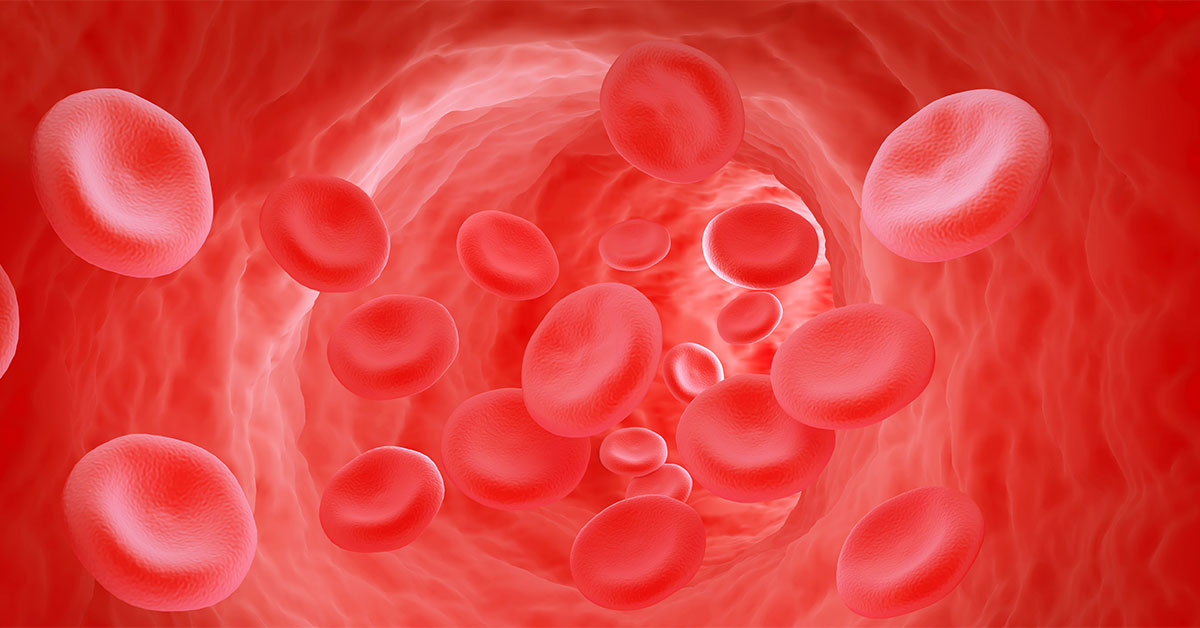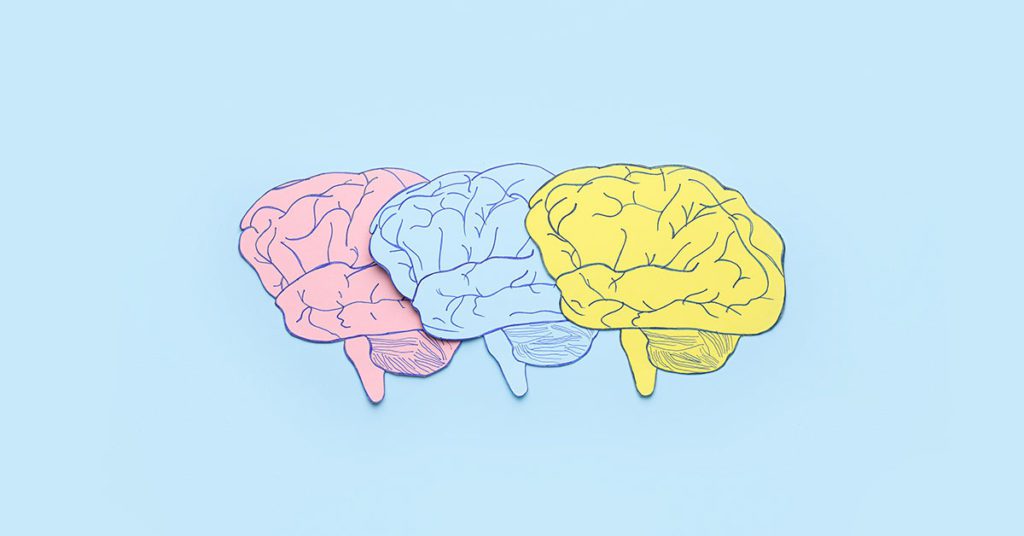A good blood supply is good for your brain. Blood carries oxygen and other nutrients to feed hungry brain cells. Your blood also delivers messages about the body so the brain can do its job better. Find out more about the relationship between your blood and the brain and how to increase blood flow to the brain to keep your mind sharp.
The Brain/Blood Flow Relationship
The brain only makes up 2% of your body weight. But, as the most complex organ in the body, it requires about 20%—or a fifth—of the blood flow in your body.
Your brain needs essential oxygen and nutrients supplied by the blood to function. The blood also “cleans” the brain. It passes through to collect wastes and flush out toxins.
You might think of your brain as the one calling the shots, making demands for the blood to come “fill up the gas tanks” and provide fuel for neurons when they need it. But, research indicates that it’s more of a give-and-take relationship:
- When hungry brain cells need more fuel, they signal nearby blood vessels. The vessels respond by widening to allow more blood to flow to the brain cells.
- Sometimes blood takes the wheel and tells the brain cells how to operate. The blood travels around the body, collecting information. Then it shares this information with the brain cells, to let them know what the body needs.
“When it comes to the brain, blood also seems to be more than a traveling storyteller. In some cases, the blood may be writing the script,” according to Science News.
Christopher Moore, a principal investigator in the McGovern Institute for Brain Research at MIT, supports this idea. He developed the Hemo-Neural Hypothesis after observing that dilating or constricting the size of blood cells consequently changed the behaviors of neighboring neurons.
This could mean that the blood makes decisions for the brain and has control over what brain cells do. The blood doesn’t just provide a delivery service. It has a powerful influence over the brain, too.
The brain and blood work together. And, like any healthy relationship, communication is key. Supporting conversations between the blood and brain helps the brain do its job to manage the body. At the same time, healthy circulation provides your brain with all the nutrients it needs to keep things running.
Why Increase Blood Flow to the Brain?
Increasing blood flow improves the relationship between your blood and brain cells. Blood brings more energy to power the brain. Just like adding more fuel makes a fire burn brighter, increasing blood flow boosts brainpower for things like memory, thinking, and creativity.
When you increase blood flow, you boost brain power for things like:
- Creativity
- Problem-solving
- Memory Focus
- Thinking
- Long-term cognitive health
Getting into the “Flow State”: Brain Blood Flow and Creativity
You’ve heard the phrase “get your creative juices flowing”. Or, how artists reach the “flow state” when a task seems effortless and natural. That language says a lot about the connection between blood flow and creativity.
Creativity is your brain’s ability to use your imagination to come up with original ideas. It provides an outlet to express yourself, like writing a poem, cooking a new recipe, or painting a work of art.
Creativity goes beyond visual and performing arts. It’s about making connections—so your brain can take seemingly unrelated ideas, bring them together, and make them totally original.
A study from Neuroimage studied creatives, like celebrated scientists, inventors, and artists, and found that they have a higher than average cerebral blood flow.
When you get the blood flowing to the brain, you tap into your creative power.
Even if you don’t consider yourself a “creative person”, creativity can help with a lot of important tasks. When you fuel creative thinking processes with healthy blood flow, you can improve performance at work or in school. It can inspire you to see the big picture when planning a project.
Creativity can help with problem-solving, so you can look at a situation from different angles and find a solution. It also helps clarify your thoughts and emotions to build self-awareness and better relationships. It also supports personal well-being, as a way to process emotions and express yourself.
Brain Blood Flow Keeps the Memory Going
Our memory plays a big role in our lives. It helps with day-to-day tasks, like where you put your keys or to turn the oven off so you don’t burn the house down. Memory helps us learn and adapt from previous experiences. Thanks to memory, we can learn new information and become better at skills over time.
Memory also keeps us safe. It helps us avoid danger, like never touching a hot stove again or suspicious situations to avoid. It also helps us bond with others, to build trust and connection in our closest relationships.
We owe all this to a small seahorse-shaped structure in the brain called the hippocampus—the memory control center. (The name comes from Ancient Greek, híppos meaning “horse” and kámpos meaning “sea animal”). A study published in Brain found that you can improve your memory and overall cognitive performance when you increase blood flow to the hippocampus specifically.
When you increase blood flow to the brain, you protect your memory.
Blood flow doesn’t just benefit healthy brains. It could also point to potential therapies for people with declining memory caused by age or Alzheimer’s disease. Improved blood flow to the brain has shown restoration of cognitive performance and spatial- and working-memory tasks.
Researchers from the German Center for Neurodegenerative Diseases (DZNE) also studied the flow of blood to the hippocampus. A study observed a mix of healthy participants and those suffering from diseases of the brain blood vessels. Both groups showed improvement in memory and overall cognitive performance after increasing the blood supply to the hippocampus.
It works both ways: diseases of the blood also damage the brain and memory.
Conditions in the blood cells can cause vascular dementia—a decline in memory, thinking, and behavior resulting from changes in the blood vessels in the brain. Diseases, like high blood pressure, diabetes, multiple sclerosis, and hypertension, that affect the blood can also impact brain function.
Problems with blood flow are associated with all five major forms of dementia: Alzheimer’s disease, dementia with Lewy bodies, frontotemporal dementia, vascular dementia, and mixed dementias. Research in Nature Communications named low blood flow as the #1 brain imaging predictor of Alzheimer’s disease.
What happens when you lose conversations between the blood and brain?
Many disorders that impact memory see a decline in the communication between brain cells and the blood. Brain imaging has revealed a connection between low blood flow and the following:
- Memory loss and Alzheimer’s disease
- Depression
- Suicide
- Bipolar disorder
- Schizophrenia
- ADD/ADHD
- Traumatic brain injury
- Hoarding Verbal and physical aggression
- Substance abuse
Brain and blood health go hand-in-hand. Because of the strong connection between blood health and the brain, keeping your blood healthy can protect you against memory loss and other disorders that impact the brain.
FAQ: How to Increase Blood Flow to the Brain
When you stick to lifestyle habits to support blood health, you’ll see benefits in the brain, too. Even small changes can make a difference. We’ve gathered some answers to common questions about how to increase blood flow and oxygen to the brain.
1. Does exercise increase blood flow to the brain?
Yes—if you think about it, it makes sense that getting your heart pumping during exercise would naturally increase blood flow to the brain.
The body and the brain require more energy during exercise. The heart rate increases and pumps red blood cells to send oxygen from the lungs to the body. Within the first ten minutes, the increased supply of blood to the brain makes you more alert. So, if you have a mental block, take a break and work out. You’ll send a boost of energy to the brain to help you think.
In the long term, exercise enhances thinking because it activates the hippocampus—the brain’s control center for memory. It may even reverse the shrinkage of this important part of your brain which protects memory as we age.
2. Which foods increase blood flow to the brain?
You can support cardiovascular and cognitive health simultaneously. According to his Bredesen Diet, leading neurologist Dr. Dale Bredesen recommends:
- Healthy fats, such as olive oil, avocados, nuts, and seeds
- Non-starchy vegetables and leafy greens per day
- Animal proteins rich in docosahexaenoic acid (DHA), like salmon, mussels, oysters, and snow crab.
- Foods with choline, like eggs, liver, and grass-fed beef
In addition, include these foods that increase blood flow to the brain:
Citrus Fruits
Citrus fruits contain a healthy compound called flavanones, shown to increase blood flow to the brain. One study saw an improvement in cognitive function after drinking a large glass of flavanone-rich orange juice daily for 8 weeks. Citrus fruits like oranges, mandarins, grapefruits, lemons, bergamots, and limes contain this blood-brain healthy compound. Try eating whole fruits in moderation due to the high sugar content.
Ginkgo biloba
Ginkgo biloba is one of the oldest living tree species. Fossils of the tree date back 200 million years, even before the dinosaurs! It makes sense that such a resilient tree would also contribute to the longevity of our brain health. Researchers found that Ginkgo biloba improves memory by increasing blood circulation and opening up blood vessels in the brain.
Ginkgo supplements are a great way to get this blood and brain-healthy herb. Doctors recommend taking 120 mg capsules daily. If you’re new to the supplement, start with a half dose and gradually increase to the full amount.
3. Does inversion increase blood flow to the brain?
Chiropractors may recommend inversion therapy to relieve back pain and stretch the spinal cord. Research published in the Journal of Neurological Science did find evidence of increased circulation to the brain during an inversion table tilt using ultrasonography. But, another study of inversion table therapy did not find any observable changes in blood flow to the brain. If you plan on using an inversion table, make sure to take caution and consult with your doctor in order to avoid injury.
4. Do inversion poses in yoga increase blood flow to the brain?
If you’ve ever taken a yoga class, your teacher may have recommended inversion poses to increase blood flow to the brain. Inversion poses in yoga position the heart and hips above the head, such as headstands, handstands, forward folds, and downward-facing dog.
But, do those claims stand up to science?
A study from the National Institute of Ayurveda found that inversion poses do help improve circulation and blood flow to the brain, sensory organs, and face. As a form of exercise, yoga increases the heart rate and blood flow. In addition, yoga and other types of meditation support brain and cardiovascular health by helping to cope with stress. If you experience neck problems or circulatory disease, speak to your doctor before practicing more advanced inversion poses.
The Blood and Brain Work Together
Western medicine breaks down the body into different groups of organs, each with its own specialized role in the body. These systems do not work alone. Like the brain and the blood, the organs work together in a symbiotic relationship. Good blood health means a healthy brain, and vice-versa. When you take this approach, you can adopt whole-body approaches to health to support overall well-being.
Related Reading:





